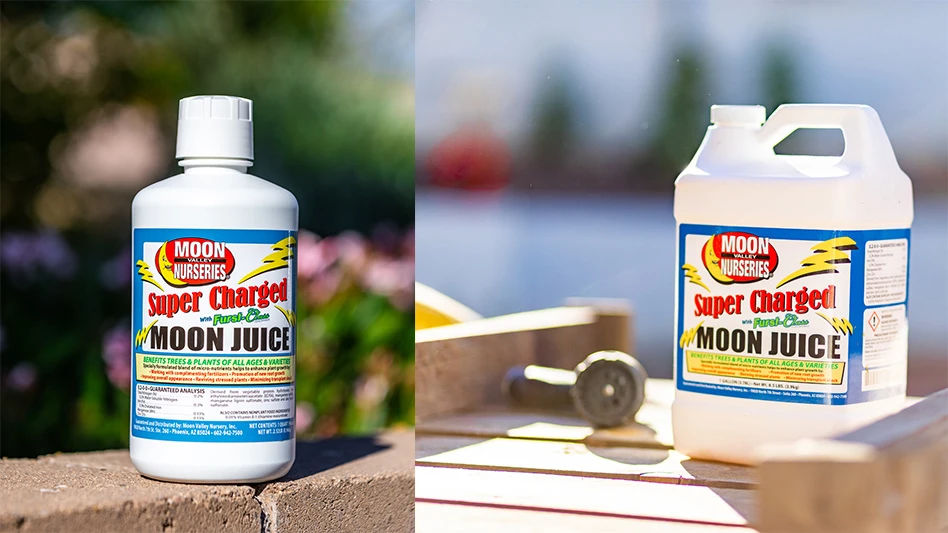 A cistern is used to capture and store rainfall from surface of greenhouse roof. Stored rainwater is blended with salty water to reduce potential for salt accumulation in substrates and on pots and irrigation lines. |
Water availability and efficient application are the most common operational concerns related to water. But water quality, a factor foundational to crop health, is often overlooked. For instance, how often in the last two years have you monitored the pH and/or soluble salt levels in your irrigation water to determine if you are still irrigating, fertilizing or amending your container substrate correctly? Are your pH and electrical conductivity (EC) values in a “safe” range to promote growth and optimize mineral nutrient availability? (See “How to Interpret A Water Quality Report” at http://tinyurl.com/interpret-water-quality) Many of the problems associated with slow plant growth or unsightly foliage are related to the quality of the irrigation water used. When you develop a baseline water quality, you can plan a successful production schedule with regard to plant species, fertilization requirements, irrigation volumes, and time to market. Without monitoring and managing water quality, there is potential for increased “shrinkage” (i.e. product loss during production) and increased production time resulting in decreased profitability. Knowledge is the best tool to improve water quality operational efficiency.
To gain a better understanding of water-related issues, a survey of 388 U.S. nursery and greenhouse growers was conducted in 2012. When asked if they monitored water quality, the majority of respondents did not (45-80 percent), regardless of their source.
Another layer of complexity related to water quality is that of biotic and chemical contaminants. Biotic (e.g. pathogen, algal, bacterial or viral) and chemical (e.g. nutrients, growth regulators, pesticides or suspended solids) contaminants can impact plant health, and reduce productivity if poor quality water is recycled without adequate treatment. Water conservation is becoming more critical as drought cycles increase and urban populations grow, creating a greater demand. Thus, alternative water sources, including recycled (reuse of production area irrigation runoff) and reclaimed (treated municipal wastewater), may be needed to maintain adequate water resources for crop production. Chemical and biological contaminants in alterative water resources could impact plant quality and growth rates.
 |
Of the 23 percent of respondents who monitored water quality in a containment pond, only 48 percent monitored one parameter once a season or less, 23 percent monitored one parameter on a monthly basis, and 29 percent monitored at least one water quality indicator on a weekly basis. The most common parameters that were monitored included: pH (88 percent), EC (63 percent), alkalinity (50 percent), nutrients (44 percent), suspended solids (31 percent), pathogens (19 percent) and pesticides (6 percent).

Monitor pH
Monitoring water pH is critical because it often shifts over a growing season or even within a single day, depending upon water source. Within containment ponds, water pH can shift from 6.0 in early morning to greater than 10.0 by late afternoon. Algae fix CO2 during the day when they photosynthesize, increasing the concentration of hydroxide ions in solution and raising pond pH. Shifts in pH are more prevalent at the surface of the water and are therefore reduced when irrigation pump intakes are placed at the proper depth, 2-3 feet from the bottom of the pond. Use of water with a pH > 7.5 for irrigation or pesticide application could decrease nutrient uptake by plants or promote alkaline hydrolysis of some pesticides. Alkaline hydrolysis is a chemical reaction that degrades the active ingredient of some pesticides within a short period of time (~1 hour). Monitoring and managing the pH and alkalinity of irrigation water (e.g. acid injection) is a critical strategy for crop production, as fertilizer, substrate, and pesticide efficacy can all be reduced if proper pH is not maintained.
EC checks
Monitoring the EC of your water source, especially if production runoff is recycled, could save you money, as you could reduce fertilization rates by reusing nutrients that are typically lost. If EC is used as a proxy for the relative levels of salts in recycled water, periodic sampling and analysis (e.g. monthly) for presence of beneficial salts (N, P and K) and salts contributing to phytotoxicity (Na, Cl or B) should be scheduled. A blending plan can be developed to determine the proper ratio of “clean” and recycled water to minimize potential detrimental impacts on crop growth.
 Intake for irrigation pump floating on top of an algae infested pond. |
Other factors
In general, most growers have a zero-tolerance policy for pathogens and chemically treat water to ensure complete kill. Recent research has shown that some of the most effective ways to reduce pathogen loads have nothing to do with chemical control. The depth of pump intake and maximizing the distance between runoff return and pump intake are critical factors that limit reintroduction of pathogens to production areas. Another mechanism to determine which, if any, phytopathogens are present in your irrigation water is to monitor for their presence via baiting.
Pesticide contaminants are of concern as pesticide residues might persist in containment ponds receiving runoff from production areas or be present in surface waters from operations up stream. Occasionally, pesticide residues have resulted in widespread phytotoxicity to crops. If reapplication of pesticide residues is a concern, representative sample(s) should be collected directly from the irrigation nozzle at pre-determined intervals during a series of irrigation events following a pesticide application. Consider working with your state nursery extension specialist to develop a sampling plan because sampling for pesticides is more costly and requires specific handling procedures.
 Residues of pesticide contaminant are visible on the surface of production runoff draining into a retention pond. |
Make changes now
This series on the state of water in the green industry focuses on the single production element that is often overlooked but can have far reaching impacts if it is scarce or under- or over-applied. We emphasized the importance of water security and how current and future regulations and trends may necessitate the need to proactively integrate water capture infrastructure at your operation, either for reuse and/or to limit agrichemical release into offsite water resources. We highlighted simple and advanced methods to increase water use efficiency; emphasizing appropriate application methods, optimizing irrigation application uniformity, and finally optimizing irrigation scheduling so that plants receive the correct amount of water at the correct time to maximize plant growth and minimize leaching. We discussed the benefits of advanced irrigation control via sensor networks. Finally, the most common water quality parameters that impact crop growth were discussed along with monitoring strategies to maximize water quality, reduce pathogen impacts and increase crop health at your operation.
Water is a major component of successful ornamental production, and growers should strive for maximum efficiency. Begin changing your production practices now: monitor irrigation efficiency, monitor water quality and develop a plan to implement remediation or containment ponds. Learn about treatment options available to manage water quality issues. If you implement changes now, you might be surprised how your economic bottom-line improves as you implement the factors we described in this article series. NM
Sarah White is an assistant professor and nursery extension specialist at Clemson University, swhite4@clemson.edu. Jim Owen is an assistant professor and nursery crops Extension specialist at Virginia Polytechnic Institute and State University (Virginia Tech), jim.owen@vt.edu. John Majsztrik is a post-doctoral researcher at the University of Maryland, jcmajsz@umd.edu. John Lea-Cox is a professor and nursery research extension specialist at the University of Maryland, jlc@umd.edu.
If you missed the first two stories in the series, find part one at http://bit.ly/12veXI2 and part two at http://bit.ly/13EGnCT.

Explore the August 2013 Issue
Check out more from this issue and find your next story to read.
Latest from Nursery Management
- Society of American Florists accepting entries for 2025 Marketer of the Year Contest
- Sustainabloom launches Wholesale Nickel Program to support floriculture sustainability
- American Horticultural Society welcomes five new board members
- Get to know Christopher Brown Jr. of Lancaster Farms
- American Floral Endowment establishes Demaree Family Floriculture Advancement Fund
- The Growth Industry Episode 3: Across the Pond with Neville Stein
- The Growth Industry Episode 2: Emily Showalter on how Willoway Nurseries transformed its business
- March 2025 issue recap






